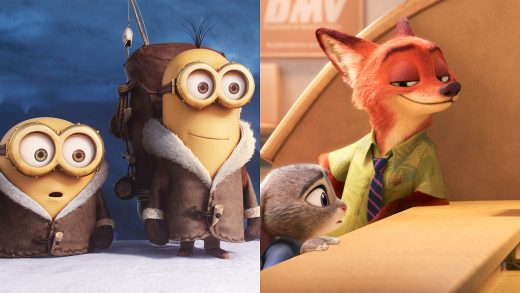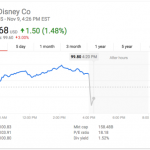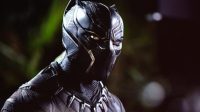Why Comcast Buying DreamWorks Animation Is A Major Threat To Disney
News that Comcast, the parent company of Universal Pictures, is in talks to purchase DreamWorks Animation sent ripples through Hollywood when it was reported by the Wall Street Journal on Wednesday.
Besides being yet another high-priced Hollywood deal—the reported purchase price is $3 billion—the change, if it happens, would significantly rearrange the order of things in the animation universe, making Comcast a much more formidable rival to Disney. Universal’s animation titles come by way of Illumination Entertainment, which is run by Chris Meledandri and has made a name for itself churning out hits like Despicable Me and Minions. The films have all been immensely profitable, in part because Illumination keeps costs low by outsourcing production, but the company is still seen as a smaller player than its rivals. (That may change with this summer’s Secret Life of Pets, which has been generating buzz for months now.) In addition to providing Comcast with more animated films, DreamWorks also offers consumer products and theme park opportunities—another Disney-like strategy that Comcast is said to be eager to focus more attention on.
By bringing DreamWorks Animation, home of the Shrek, Madagascar and Kung Fu Panda franchises, and Illumination under one roof, suddenly Disney-Pixar would be given a run for its money. Meledandri, who according to the New York Times would likely oversee a combined animation company, could also potentially solve the problems that have been hounding DreamWorks. The company—whose track record has been scattershot in recent years, leading to layoffs and the closing of a facility in Northern California—has come under fire from Wall Street for inflated budgets. And unlike Disney and Pixar, it doesn’t have a creative executive at the helm. CEO Jeffrey Katzenberg, who oversaw Disney Animation’s Lion King-era renaissance at Disney before cofounding DreamWorks in 1994, remains his company’s biggest cheerleader and savviest deal-maker (to wit: DWA’s purchase of Awesomeness TV and its deal to create kids’ programming with Netflix). But unlike Lasseter, he’s not an artist. Under his leadership DreamWorks Animation has never empowered directors and other creatives the way Pixar and now Disney do, which insiders say has hurt the filmmaking process.
Meledandri, who like Katzenberg got his start in live-action filmmaking, is much more of a creative executive. In the early 2000s he built Blue Sky Studios—Fox’s CGI arm—into a significant player with films like Ice Age and Horton Hears a Who, all of which he closely supervised and executive produced. He also produced the Oscar-nominated shorts Go Nutty and No Time for Nuts.
The Mouse House, of course, has the two top-tier animation companies, Pixar and Walt Disney Animation, in its stable. Under the leadership of the Pixar founding fathers John Lasseter and Ed Catmull, this year alone the company is unleashing three major animated titles: Disney’s Zootopia, which is on its way to grossing $1 billion at the global box office; Finding Dory, Pixar’s sequel to Finding Nemo; and Moana, a Disney feature about a Polynesian princess written and directed by Ron Clements and John Musker, the team behind The Little Mermaid and Aladdin.
It’s hard to imagine a DreamWorks Animation without Katzenberg, who controls 60% of the company’s voting stock. And it’s unclear how DreamWorks and Illumination would be melded together. What is clear is the message to Disney: Watch out.
Fast Company , Read Full Story
(88)














